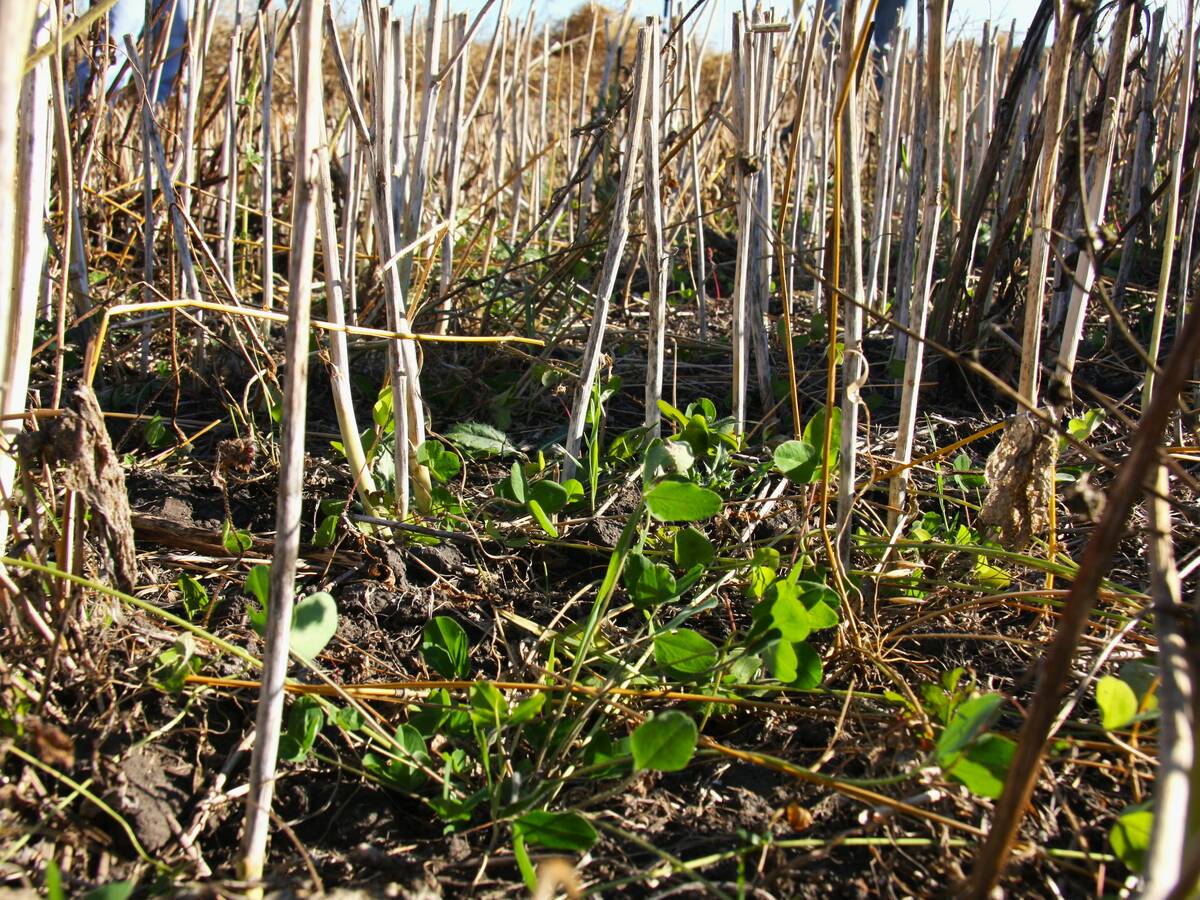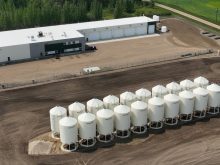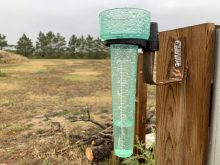Imagine reducing a 25,000 bushel bin of malting barley from 15 percent moisture to less than 14 percent moisture in a wet fall without fans, aeration, heat or electricity.
Arlynn Kurtz doesn’t have to imagine.
He did it last fall with a four-section, 32 foot Grainair Tube installed in the middle of a big bin.
Once he shipped the malting barley, Kutz again used the bin and Grainair Tube to save 25,000 bu. of wheat laced with snow, ice and frozen chunks.
“We combined the barley at the end of September and filled the large bin. It went in around 15 percent,” said the farmer from Stockholm, Sask.
Read Also

Saskatchewan project sees intercrop, cover crop benefit
An Indigenous-led Living Lab has been researching regenerative techniques is encouraging producers to consider incorporating intercrops and cover crops with their rotations.
“But we had crappy weather, so even if we had aeration fans, it wouldn’t have done any good. All we’d do is blow in more wet air. Then there’s the cost of aeration. I’d say this bin would be $10,000 plus getting enough power to run a fan. Ten horse would be the bare minimum.”
Kurtz checked the bin in late November and found a four-foot diameter ring of spoiled grain at the top, just inside the lid.
“We had the lid closed so the condensation couldn’t escape, and that’s what happened. This showed us how much water is coming out the top of that tube,” he said.
“Now that we’ve seen how much moisture the tube can pull out of a bin, I think we’ll look at installing whirlybirds on our lids so they can pull the moisture into the atmosphere.”
Kurtz said the Grainair Tube system is internal, unlike aeration systems that push external air into the bin. Once the Grainair Tube expels a gallon of water from the bin, that gallon is gone for good.
Kurtz’s malting barley was less than 14 percent moisture by the time he shipped it in December.
He said his only cost in removing more than a percentage point of moisture from 25,000 bu. of grain is his investment in the Grainair Tube, which should last years.
Two years ago, he installed three Grainair Tubes in his bin along the walls, but that didn’t work well. Last year, he moved two of the tubes into 5,000 bu. bins and put the remaining one in the middle of the big bin.
“It really works well with just one pipe in the centre,” he said.
“I think it pulls better than when we had three pipes. The bin diameter is 35 feet. It had no problem drawing moist air away from the walls.”
Kurtz moved in problem wheat from temporary storage once the bin was emptied in December. It had been a wet, cold harvest and the wheat was up around 16 percent moisture with plenty of ice and snow.
“I was afraid the stuff would freeze up solid in there and we’d never get it out until spring. So after about six weeks, I decided to try it. That was late January,” he said.
“There was absolutely no problem. There was no freezing. The ice and snow and frozen chunks had all disappeared.”
Kurtz said the moisture content hadn’t changed, but the natural air movement caused by the tube had pulled enough air through the grain to eliminate all frozen material. It flowed perfectly.
“I had an elevator agent tell me years ago that if I have tough grain, I should load it to the bottom of my bin, not the top. He said cold air moves down the walls, hits the floor and then moves up the centre.
“If you put your tough grain at the bottom, the natural air currents pull the moisture up the centre and out the top if you’ve got the lid open.
“That’s why I think a whirlybird up on the lid will create a vacuum affect and help pull the water out.”
Research performed decades ago supports the elevator agent’s theory.
Instruments mounted within grain bins monitored temperature, moisture and pressure and found that air in a bin moves down the cold outer walls in the winter, carrying moisture along. When the cold air hits the bin floor, it is forced into the centre of the bin where temperatures are relatively warmer. The warmer air naturally rises and brings moisture along with it to the top centre of the bin.
Warm moist air that isn’t expelled from a bin typically leads to hot spots, bugs and spoiled grain. Producers spent a lot of money on a wide variety of aeration and grain drying systems. They also lost money when they didn’t take care of their grain.
A few years ago, farmer Gary Schreiner of Langham, Sask., wondered what would happen if he provided an open, unencumbered passageway for the rising moist air in the middle, which is where the warm moist air wants to go.
He hypothesized that air might rise quicker and expel more moisture out the top if it had a clear channel.
Schreiner conducted a few experiments and found that his theory worked better than expected. His next step was to make a small number of Grainair Tubes for sale.
“When I first showed them at (Manitoba) Ag Days (in Brandon) three years ago, nobody believed these tubes would do anything,” Schreiner said.
“But a few guys took a gamble and bought. It wasn’t long before they were back to buy more. Then all of a sudden, it really took off.
“We’ve got Grainair Tubes in over 2,000 bins now, everything from 2,500 bu. up to 25,000 bu. And now we’re starting to experiment with silos, 60 feet up to 100 feet.”
Bins equipped with Grainair Tubes use no other aeration and don’t require spending money on electricity or gas.
Improvements to the original design include eight feet long sections rather than four feet. As well, with a maximum height now of 32 feet, the steel thickness has increased to 18 gauge from 20 gauge.
Each end now has a steel band welded inside to serve as a stop when connecting two sections. For safety, the connections are still fastened with self taping screws. Schreiner has also developed a better mounting system for hopper bottom bins.
“When you unload a hopper bottom, and you get down to about a third left in the bin, the pipe has to be free to move around some. The grain wants to unload from one side, then the other side, so you can’t have a solid mount for the tube.
“So on hoppers, the base is held by a very strong rare earth magnet. It can slide back and forth, but the pipe won’t come off. And you know the tube is always in place next time you load the bin.”
Schreiner doesn’t think larger diameter tubes are needed in large volume bins.
“Guys with tubes in Quonsets and grain rings have told us the tube draws air from 20 feet in every direction. So that’s a 40 foot circle. That’s enough for just about any situation.”
He said the base price is about $600 for a Grainair Tube with two eight-foot sections. With the magnetic base, prices start at $1,300.
For more information, contact Gary Schreiner at 306-933-1134 or visit www.grainairtubes.ca.















